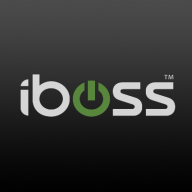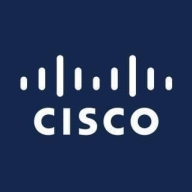


Cisco Umbrella and Cisco Secure Access compete in the cybersecurity category. While Cisco Umbrella is leading with its DNS-based protection, Cisco Secure Access stands out with its robust secure access capabilities.
Features: Cisco Umbrella specializes in DNS-based protection providing malware protection, content filtering, and cloud-native security with extensive reporting capabilities. It offers DNS-level visibility and management for network security. Cisco Secure Access provides advanced secure access features including Zero Trust Network Access (ZTNA), firewall as a service, and cloud access security broker functionality to ensure seamless connectivity both on-premises and remotely.
Room for Improvement: Cisco Umbrella could improve by offering more detailed reporting, better integration with threat intelligence, and enhanced IPv6 support. Users also desire improved user-level traffic monitoring. Cisco Secure Access could enhance its pricing models, increase third-party integrations, and provide support for a wider range of devices. Both products experience licensing complexity that could be streamlined.
Ease of Deployment and Customer Service: Both Cisco Umbrella and Cisco Secure Access offer quick deployment options whether on-premises or in the cloud. Cisco Umbrella is noted for its user-friendly integration into existing environments, and Cisco Secure Access is highlighted for effective secure access capabilities. However, users request faster support response times and clearer pricing and licensing communication.
Pricing and ROI: Cisco Umbrella's segmented subscription plans make pricing challenging, yet the value in DNS security and cloud-based convenience is recognized, often reflected in reduced hardware costs and improved security. Cisco Secure Access faces higher cost criticism compared to competitors, yet the comprehensive security and control it offers is appreciated. While both find pricing contentious, most report worthwhile ROI through enhanced security and reduced maintenance expenses.



| Company Size | Count |
|---|---|
| Small Business | 6 |
| Midsize Enterprise | 6 |
| Large Enterprise | 5 |
| Company Size | Count |
|---|---|
| Small Business | 6 |
| Large Enterprise | 7 |
| Company Size | Count |
|---|---|
| Small Business | 49 |
| Midsize Enterprise | 30 |
| Large Enterprise | 51 |
Iboss offers a comprehensive cloud-based security platform valued for its scalability and autonomous features, ensuring robust security with easy deployment and management capabilities.
Renowned for its robust security architecture, Iboss integrates seamlessly within diverse networks, delivering efficient granular filtering and advanced content categorization. Its single pane of glass console provides ease of management, allowing rapid scalability suitable for rapidly deploying environments. Operates in BYOD setups due to inline filtering without device installation. Integration with cloud-based applications enhances user control, and features like SASE, SSL inspection, and ChatGPT risk protection stand as highlights. Despite its strengths, users have pointed out areas for enhancement like direct navigation in reports, SSL decryption, and better cloud integration while having room to improve data loss prevention.
What are the most important features of Iboss?The usage of Iboss spans educational institutions, specifically K-12, to enforce internet policies, protect data, and support remote work environments. It provides web filtering and security frameworks to ensure safe browsing. Its platform-as-a-service model offers flexibility for both cloud-based and on-premises requirements, integrating seamlessly to deliver enhanced security features suitable for various deployment needs including zero trust, CASB, and network security for work-from-home setups.
Cisco Secure Access is a comprehensive Security Service Edge (SSE) solution (a key component of a SASE solution) that addresses the complexities of securing a hybrid enterprise. Cloud-delivered and grounded in zero trust, it delivers a unique blend of user simplicity and IT efficiency for frictionless, secure access to all applications—SaaS (with gen AI), private apps, and the internet—regardless of user location or device. Secure Access protects users, data, and devices against relentless, sophisticated, and constantly evolving threats including AI-driven attacks and identity breaches.
Provides all core SSE components (ZTNA, SWG, CASB, and FWaaS) plus extended capabilities.
Includes VPN-as-a-Service (VPNaaS), data loss prevention (DLP), AI Assistant, visibility/control/guardrails for generative AI use, digital experience monitoring (DEM), reserved IP, remote browser isolation (RBI), DNS-layer security, flexible security enforcement (in cloud or on-premises), policy verification, and more.
Protects users as they seamlessly access resources and apps with no extra steps needed, regardless of protocol, port, or level of customization
Simplifies IT operations through a single client, single dashboard, single license, and unified policies.
Lowers risk with least privilege, granular controls backed with unmatched threat intelligence of Cisco Talos.
Eases interoperability with other products from Cisco and third-party vendors with common administrative controls, data structures, and policy management.
Robust integrations
Integrates with Cisco Identity Intelligence to protect against the startling increase in identity-based attacks.
Integrates with many SAML Identity Providers (IDPs) such as AD, Azure AD, Okta, Ping, etc.
Integrates with Cisco offerings including SD-WAN, Splunk, XDR, Thousand Eyes, third party technologies such as Menlo RBI, Chrome Enterprise Browser, and AppOmni for SSPM.
Cisco Umbrella delivers rapid DNS security with over 30,000 customers, providing outstanding threat protection and handling more than 600 billion requests daily. It's recognized for high threat efficacy in the SSE domain and integrates elements like SWG, ZTNA, CASB, and more.
Cisco Umbrella is renowned for its effective DNS-layer security against ransomware and phishing. It offers flexible content filtering and integrates seamlessly with existing networks while providing single-pane-of-glass management for centralized monitoring. Its robust threat intelligence and customizable policies are central to its appeal. Users highlight room for improvement in areas like WHOIS data inclusion, malware enhancement, and reporting analytics. Integration with other threat feeds and better client support are requested for more comprehensive coverage.
What are the key features of Cisco Umbrella?
What should users expect in reviews about Cisco Umbrella?
Industries implement Cisco Umbrella primarily for DNS-level security, web filtering, and protecting remote employees. It strengthens cybersecurity frameworks by blocking malware and avoiding access to harmful sites. The tool is widely integrated with Active Directory and Cisco Meraki, providing consistent internet security for employees.
We monitor all Domain Name System (DNS) Security reviews to prevent fraudulent reviews and keep review quality high. We do not post reviews by company employees or direct competitors. We validate each review for authenticity via cross-reference with LinkedIn, and personal follow-up with the reviewer when necessary.